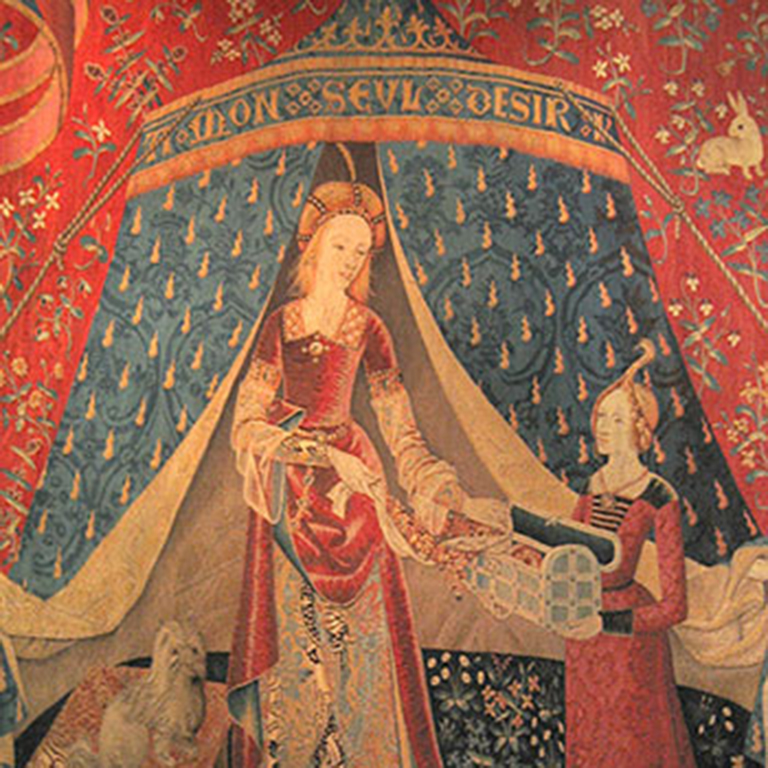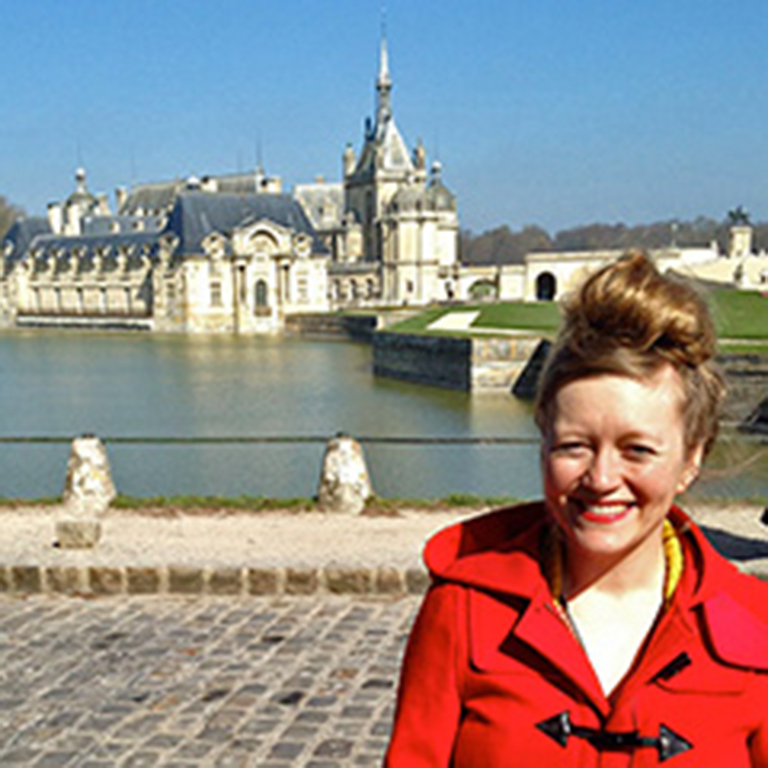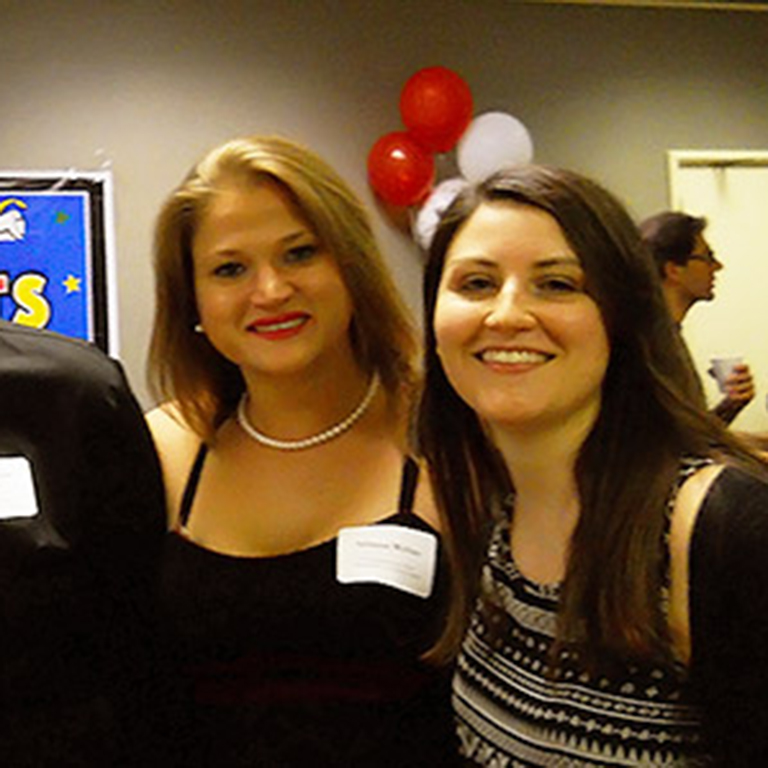A group of six scholars from the Department of French & Italian and the Department of Linguistics have launched an online database of the corpus of the 13th-century Old Occitan Romance of Flamenca. The digital project has two purposes: as material for linguistic research, and to aid in broader studies in linguistics and Occitan culture. The result of this work in progress can be seen online: First, through the interactive database with parallel glossary and comments, and secondly through the ANNIS web-search engine. Though now very limited in use, Occitan was a thriving language of southern France (Provence) in medieval times. It is best known as the language of troubadors, who wrote and performed lyric poetry set to music, often with themes of courtly love and chivalry.
2014 News Archive
Research group works on Occitan Roman de Flamenca

At present, the project team is comprised of doctoral student Olga Scrivner (French Linguistics/Computational Linguistics), who bridges the two departments involved; doctoral student Eric Beuerlein, Adjunct Assistant Professor Devan Steiner, and Associate Professor Barbara Vance from the Department of French & Italian; and Associate Professor Sandra Kübler and doctoral student Michael McGuire from the Department of Linguistics. They are working with the freely available 1905 edition of the Roman de Flamenca by P. Meyer and the English translation by E.D. Blodgett from the University of Alberta. Scrivner semi-automatically annotates the Occitan data and maintains the interactive website and the online search engine. Steiner and Beuerlein assist Scrivner with the manual correction of scanned text, part-of-speech tags, and syntactic parsing. McGuire provides correction for the French translation and also extracts glossary items. Vance and Kübler provide the graduate students with guidance on the project.
The original Roman de Flamenca manuscript is preserved in the Bibliothèque Municipales de Carcasonne (France). This past summer, Scrivner introduced the corpus to the 11th Congrès de l'Associacion Internacionala d'Estudis Occitans in Lleida, Spain by presenting a linguistic pilot study based on the corpus and co-authored with Blodgett, Kübler, and McGuire.
Department welcomes Vincent Bouchard
The Department of French & Italian is pleased to welcome Vincent Bouchard as a new Assistant Professor in the French/Francophone Studies program. Bouchard is a specialist in Francophone media and cultural studies, including both cultural and technical aspects of media and focused on the cultures of Francophone Africa and North America. He earned a Ph.D. in comparative literature from the Université de Montréal and a Doctorat en études cinématographiques et audiovisuelles at the Sorbonne nouvelle, Paris III, both in 2006. Bouchard joins us after five years in the Department of Modern Languages at the University of Louisiana at Lafayette. We expect his work will find resonance in the new IU Media School within the College of Arts and Sciences, which was launched on July 1, 2014.

Professor Bouchard’s book Pour un cinéma léger et synchrone à Montréal! was published by Septentrion University Press in 2012 and deals with the aesthetic, institutional, and technical development of film in Québec during the late 1950s and 1960s. In collaboration with Germain Lacasse (Université de Montréal) and Gwenn Scheppler, he has co-directed an issue of the scientific journal Cinémas (Le bonimenteur et ses avatars, Cinémas, vol. 20, n° 1, 2010), and the book Pratiques orales du cinema (Editions L'Harmattan, Paris, 2011). With Fabrice Leroy, he also co-directed an issue of the scientific journal Études Francophones focused on Québec (UL-Lafayette, vol. 5, December 2010). Bouchard’s most recent publication, about the Quebecois novelist, political activist and filmmaker Hubert Aquin, appeared in the journal Québec Studies this year.
H. Wayne Storey awarded NEH grant
The National Endowment for the Humanities announced on July 21 that Professor H. Wayne Storey has received a grant of $275,000 over three years for “The Petrarchive Project: An Online Edition of 366 Poems by Petrarch.” The project is a collaboration with John A. Walsh, associate professor of library and information science in the School of Informatics and Computing.
Originally funded in 2013 with an IU New Frontiers grant, the NEH project focuses on the preparation for publication of a digital, “rich text” edition of Petrarch’s Rerum vulgarium fragmenta, also known as the Canzoniere, that incorporates the complex visual poetics and book design that were integral to the poet’s techniques and the meaning of his poems. The edition will include an apparatus of variants, manuscript facsimiles, commentary and supporting material in English and Italian. While known as the poet credited with developing forms such as the sonnet and the sestina, Petrarch was also a scholar whose long years of study and annotation of classical works gave him unique views on the preparation and material construction of books. The Petrarchive Project will bring a fuller picture of Petrarch’s work to scholars worldwide.
Ph.D. candidate participates in monkey-themed conference in France
Kathryn Bastin, a Ph.D. candidate in French Literature in the Department of French & Italian, participated in the international conference “Singes et Singeries à la Renaissance” organized by the 16th-Century Workshop of the Université de Paris-Sorbonne on March 15, 2014. Bastin, who is currently finishing her year as a College of Arts and Sciences dissertation fellow, was among a select few scholars, mainly from Europe, to participate in this “Journée d’Études,” which took place at the Château de Chantilly north of Paris, known for its two monkey-themed rooms, the grand singerie (1737) and petite singerie (1735). In French, singe means both monkey and ape, and singerie can mean both monkey business and monkey room. Bastin’s Ph.D. dissertation title is “Humanity in Play: Man Meets Monkey in Ancien Régime France,” so the conference was right up her alley.

At the conference, Bastin delivered a paper entitled “Les pièges de l’imitation: Ésope à Versailles,” that focused on the Labyrinth at Versailles, which was in existence approximately 1675 to 1775 and included 39 fountains with animals from Aesop’s fables, among them six monkeys. She explains that in French cultural history “we see a treatment of the monkey and ape as a figure that holds a mirror for the human in the Renaissance and the early modern period: the monkey allows man to behold himself.”
Bastin was particularly excited to visit the Château de Chantilly’s famous singeries, painted by Christophe Huet, as she will analyze them as part of her dissertation. Although the focus of the conference was on an earlier time period than her own research, Bastin noted the importance of “considering precursors to what I am studying, and how these anterior notions of the monkey and ape shaped the Old Régime treatment of the simian.” In today’s world of scientific understanding regarding our evolutionary precursors, the Renaissance attitude toward simians is indeed a fascinating topic.
Students celebrate commencement at FRIT reception
On May 9, students, their families, and faculty members of the Department of French and Italian and the Department of Spanish and Portuguese gathered for our annual joint reception for graduating seniors in the State Room East of the Indiana Memorial Union. 24 French majors and 10 Italian majors either graduated from IU-Bloomington this May, or will graduate at the end of the summer. Among those in attendance was Hayleigh Elmore, who finished her B.A. in three years and has been hired by Teach for America to teach French next year in her home town of Dallas. Adriana Giuliani has just completed both a B.A. in Italian and a B.S. in microbiology, and she recalled fondly her year in Bologna, where she not only participated in the IU study abroad program but also completed an internship at the Hospital Bellaria. She is off to medical school at Ohio State in the fall, but plans to keep up her Italian skills by working on translations of poems and prose writing left by her late nonna (grandmother).

Several graduates plan to return to Europe to teach next year. Hayley Connizzo (B.A. in French and International Studies) and Brandon-Lee Dayton (B.A. in French, Italian, and Linguistics) will both participate in the TAPIF program, through which Americans serve as English teaching assistants in French middle schools and high schools. Meanwhile, Margaret Uland (B.A. Italian and Psychology) will be teaching English in Italy next year, at a high school in Busto Arsizio in Lombardy.
We wish all of our graduates the best of luck as they embark on new adventures post-IU!
 The College of Arts
The College of Arts